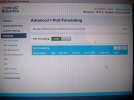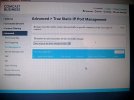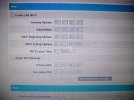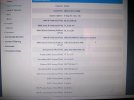When you ping yahoo.com and get cannot resolve means that you don't have access to the working DNS server. When you change the IPS usually you need to change the DNS servers because the old ISP limits they DNS only to they clients unless you are using some public DNS server as google's 8.8.8.8
So check if you have ping to the public DNS server by using ping 8.8.8.8
If you don't have ping to it then check if you have ping to your default gateway (router).
So check if you have ping to the public DNS server by using ping 8.8.8.8
If you don't have ping to it then check if you have ping to your default gateway (router).
You check if you have your open port 80 only for your old ip address. If you see your old ip address there you need to change it.What am I checking for in /etc/ipf.rules?






